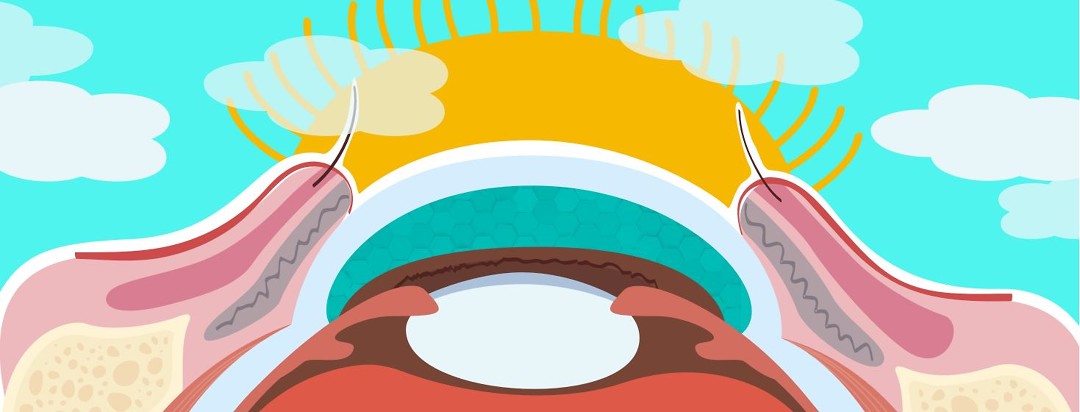What is Fuch's Dystrophy?
Fuch’s dystrophy is an eye disease that affects the cornea, the front surface of the eye. It occurs when a layer of cells in the cornea begin to die off. This layer is called the endothelium and these cells are responsible for maintaining the proper amount of fluid in the cornea, which keeps the cornea clear. Without the proper amount of fluid, the cornea swells (which is called edema) and the vision gets cloudy or hazy. It usually affects both eyes.
The condition is sometimes called Fuch’s corneal dystrophy or Fuchs' endothelial dystrophy. It was first diagnosed by Dr. Ernst Fuchs, an Austrian ophthalmologist, in 1910.1-4
Causes of Fuchs' dystrophy
Some cases of Fuch’s dystrophy are caused by genetics while a person’s environment seems to contribute to other cases.
- Doctors do know that if a parent has the disease, their children have roughly a 50 percent chance of getting it too.
- More women than menget Fuch’s dystrophy.2
- One gene on chromosome 1 has been discovered to be responsible for early-onset Fuch’s dystrophy. Mutations in Chromosomes 13 and 18 have been linked to late-onset Fuch’s dystrophy.3
- Smoking, particularly in women, seems to worsen the disease.
- Having diabetes, >age-related macular degeneration, and cardiovascular disease are also risk factors.5
However, in many cases, there is no known cause.2
Symptoms
Early stage
In the early stage (stage 1), there may be few, if any, symptoms. It’s common for the vision to be hazy or blurry when first waking up, but this improves later in the day. People in their 30s and 40s can have Fuchs' dystrophy and not know it.
Stage 2
In the later stage (stage 2), often at age 50 or older, that hazy or blurry vision will not clear as the day goes on. Other symptoms may appear including:
- A sandy or gritty feeling in the eye
- Glare and sensitivity to light
- Eye pain
- Seeing colored halos around lights
- Poor night vision
- Eye problems that get worse in humid surroundings1
How is it diagnosed?
An ophthalmologist uses three different tests to diagnose Fuch’s dystrophy:
- Slit lamp microscopy can reveal whether are any tiny blisters on the cornea, which is a symptom of the disease.
- Pachymetry measures the thickness of the cornea. A thickening cornea may indicate Fuch’s dystrophy.
- Confocal microscopy measures the number, density, and shape of the endothelial cells. A lower number of endothelial cells and the presence of corneal guttata are also symptoms of the disease.
Treatment
Currently, there is no cure for Fuch’s dystrophy and there is no treatment that can halt or reverse the course of the disease.
Eye drops
Prescription eye drops may help relieve swelling and extra moisture generated in the early stage.
Glasses
Wearing eyeglasses with photochromic lenses (lenses that automatically darken in bright light) may help reduce sensitivity to sunlight. Also, anti-reflective eyeglass lenses may help reduce reflections that Fuch’s dystrophy makes difficult.
Surgery
For some people with late-stage Fuch’s dystrophy, surgery may be needed. The two surgeries currently available are cornea transplant (penetrating keratoplasty or PK) or the newer Descemet’s stripping with endothelial keratoplasty (DSEK). In PK, the whole cornea is replaced with a donor cornea. In DSEK, only the back half—the endothelium and Decemet’s membrane—of the cornea is replaced.
If the patient also has glaucoma, eye pressure must be carefully controlled after surgery to prevent cornea rejection.
Cataracts and Fuch's dystrophy
For people with both cataracts and Fuch’s dystrophy, cataract surgery may hasten the need for a cornea transplant. Because of this danger, some doctors prefer to conduct both the cataract surgery and cornea transplant at the same time.

Join the conversation